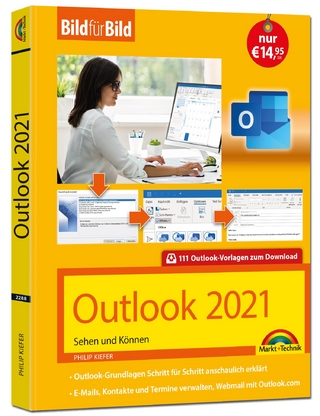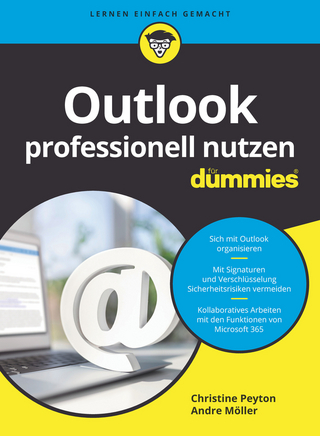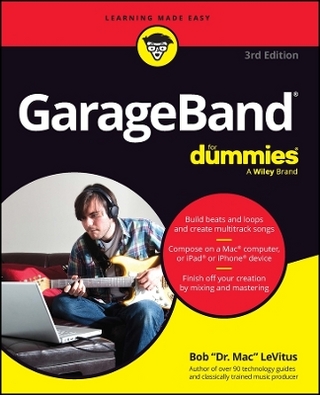
Implementing Siebel
Prentice Hall (Verlag)
978-0-13-101009-3 (ISBN)
- Titel wird leider nicht erscheinen
- Artikel merken
This book will help the reader come to grips with CRM, and with Siebel software, by laying a solidgroundwork for understanding the theory behind CRM and the tangible business benefits of this approach. The book will dive deep into the specifics of Siebel's specific modules, interfaces, and programming tools, providing helpful summaries and checklists to help managers deal with Siebel: from the planning to installation phases, through deployment rollout.
Vivek Kale has a background in Science, IT/ IS and the Information Industry. He has specific experience in Business and Management, IT/IS and ERPs and is an SAP Germany certified consultant for SAP R/3 FI-CO modules. Vic is presently looking after all US operations (including marketing and business development) for Mahindra Consulting, a company focused on providing SAP implementation and support services in the US market. Vic has published articles in India's premier computer weekly Express Computer as well as the premier business paper in India, the Economic Times. His interests lie in the information revolution and the transformation of markets and business.
Preface.
About the Author.
Acknowledgements.
I. SETTING THE STAGE.
1. The Relationship-Based Enterprise.
Siebel: The Company and its Product. Management by Collaboration (MBC). Summary.
2. Customer Relationship Management (CRM) Systems.
Introduction to Customer Relationship Management (CRM) Systems. Types of CRM Systems. CRMs as Keepers of Customer-Knowledge Assets. Electronic Customer Relationship Management (eCRM). The Customer-Triggered Company. Summary.
3. CRM Evaluation.
The Anatomy of a CRM System. Preparing a Business Case for CRM. CRM Acquisition Decision Process. Significant Issues to be Considered While Evaluating CRM. Summary.
4. CRM Selection.
Siebel for Mid-Market Enterprises (MMEs). The CRM Selection Process. The Selection Team. CRM Core Selection Methodology. CRM Vendors and Products. CRM Selection Report. Summary.
5. The Siebel Solution.
Siebel the Company. The Significance of Siebel. Other Significant Aspects of Siebel. Siebel Strategic Initiatives. Summary.
6. The Siebel Implementation Project Cycle.
Mission and Objectives of the Siebel Project. Guiding Principles for CRM Best Practices. Project Initiation and Planning. Critical Success Factors. Implementation Strategy. Siebel Implementation Project Bill of Resources (BOR). Implementation Environment. Implementation Methodology. Project Management. Siebel Implementation. Siebel Support. Siebel Deployment. Why Some Siebel Projects Fail. Summary.
7. Siebel and Enterprise Business Process Management.
Background of Business Process Management. An Enterprise BPM Methodology. BPM and Siebel Implementation. Siebel and Change Management. Summary.
II. SIEBEL APPLICATIONS.
8. Siebel Enterprise Applications.
Siebel Marketing Enterprise. Siebel Sales Enterprise. Siebel Service Enterprise. Siebel Field Service. Siebel Call Center. Employee Relationship Management (ERM). Mid-Market Applications. Vertical Market Applications. Siebel Professional Services Automation. Special Enterprise Options. Siebel Enterprise Applications Data Model Entities. Summary.
9. Siebel eBusiness Applications.
What is eBusiness? Siebel eBusiness Applications. Special eBusiness Options. Summary.
10. Siebel Applications Environment.
Distributed Applications. Siebel Applications Architecture. Siebel Enterprise Server. Siebel Data Warehouse. eBusiness Application Integration (eAI). Siebel Workflow. Siebel Wireless. Other Options. Summary.
11. Siebel Tools.
Enterprise Application Builders. Overview of Siebel Tools. Using Siebel Tools. Managing Siebel Tools Environment. Managing Application Development Projects. Summary.
III. THE PRE-IMPLEMENTATION STAGE.
12. Initiating the Siebel Project.
Siebel Executive Sponsor. Siebel Project Executive Committee. Siebel Project Steering Committee. Roles of the Executive and Steering Committee Members. Mission and Objectives of the Siebel Project. Deciding the Scope of the Siebel Project. Starting the Siebel Project. Siebel Project Management Structure. Project Management Policies and Guidelines. Risk Management in a Siebel Project. Change Management in a Siebel Project. Siebel Project Sub-teams. Summary.
13. Siebel Administration and Set-Up.
Siebel Server Administration. Siebel Enterprise Integration Manager (EIM). Siebel Sync. Siebel Applications Set-Up. Summary.
IV. THE IMPLEMENTATION STATE.
14. Siebel eRoadmap Methodology.
Why Do Sieble Implementation Seem So Complex. Siebel Implementation Best-Practices. Introducing the Siebel eRoadmap Methodology. Plan Stage. Definition Stage. Discover Stage. Design Stage. Configuration Stage. Validation Stage. Deployment Stage. Sustain Stage. eRoadmap, BPM, and Change Management. Success Patterns for Siebel Implementation Projects. Summary.
V. THE POST-IMPLEMENTATION STAGE.
15. Supporting Siebel.
Siebel Rollout. Continuous Change. Siebel Global Enterprise Support. Support Help Desk. Siebel Application's Performance and Scalability. Upgrading Siebel Applications. Siebel Online Help Development. Retaining and Retraining Siebel Consultants. Summary.
VI. SIEBEL IMPLEMENTATION AND BEYOND.
16. Valuing the Relationship-Based Enterprise.
Enterprise Stakeholders. Aspects of Enterprise Value. Economic Value Add (EVA). Value-Based Management (VBM). Balance ScoreCard (BSC). The Performance Prism. Customer-Centric Activity-Based Revenue Accounting (ABRA). Enhancement of Measures of Performances (MOPs) by Siebel. Summary.
17. Beyond the Relationship-Based Enterprise.
Intelligent Customer-Centric Enterprise. Applications Outsourcing (AO). Application Functionality as Web Services. Privacy and Security. Mobilizing the Enterprise and Relationships. Prospects for the Future: Relationships on Demand! Summary.
APPENDICES.
Appendix A: Selecting Siebel Implementations Partners.
Appendix B: SAP Consulting Partners-USA.
Appendix C: Siebel Third-Party Solutions.
Appendix D: CRM Industry Analysts.
Appendix E: Enterprise Evolution by Market Selection.
Appendix F: References.
Index.
| Erscheint lt. Verlag | 28.9.2020 |
|---|---|
| Verlagsort | Upper Saddle River |
| Sprache | englisch |
| Maße | 178 x 235 mm |
| Themenwelt | Mathematik / Informatik ► Informatik ► Datenbanken |
| Informatik ► Office Programme ► Outlook | |
| Technik | |
| Wirtschaft ► Betriebswirtschaft / Management ► Marketing / Vertrieb | |
| ISBN-10 | 0-13-101009-3 / 0131010093 |
| ISBN-13 | 978-0-13-101009-3 / 9780131010093 |
| Zustand | Neuware |
| Haben Sie eine Frage zum Produkt? |
aus dem Bereich


